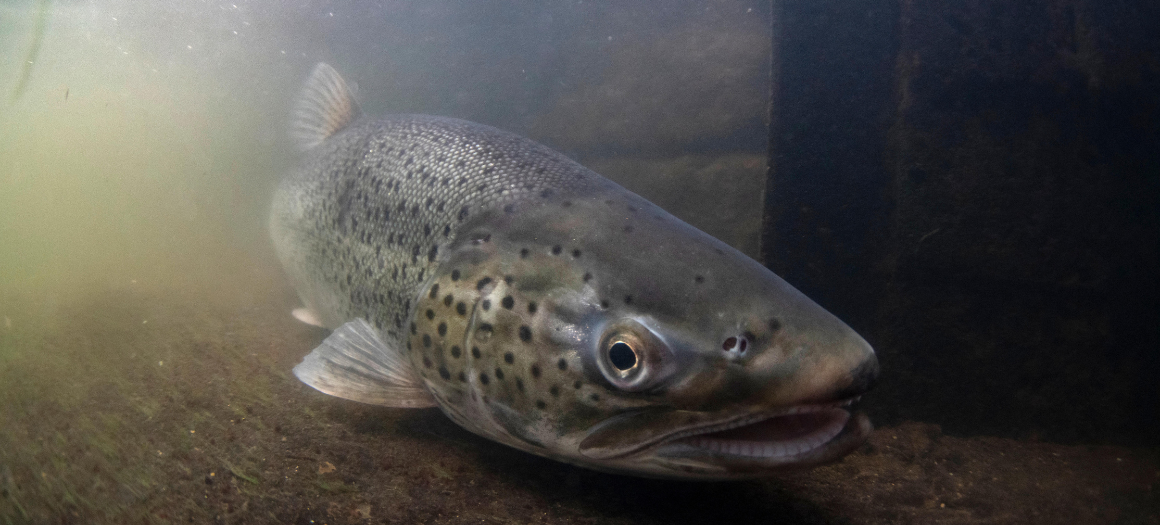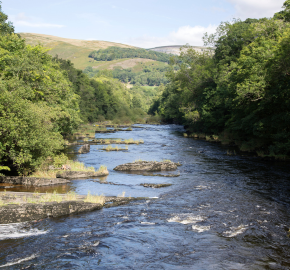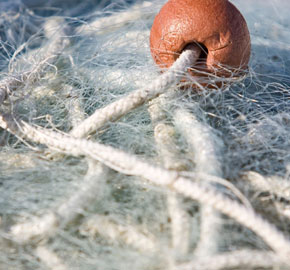New Research Uncovers Hidden Marine Life of Sea Trout

A recently published study from Artero et al. (2025), as part of the SAMARCH project [1], has revealed new insights into the lives of sea trout kelts (post-spawning trout) during their time at sea.
Sea trout are migratory fish that leave rivers to grow in the ocean before returning to spawn again. Until now, we knew very little about their behaviour in saltwater, especially in the southern range of their distribution, including the English Channel. The assumption was that sea trout stay in the top of the water column, but the data shows that’s not always true.
The importance of this research in sea trout conservation
Current netting laws in England assume that sea trout swim near to the surface and require fishing nets to allow a 3-meter clearance to protect sea trout from bycatch (the fish and other marine creatures trapped by commercial fishing nets). This study proves that many fish will dive well below that range, and will still be at risk.
In response to these findings, the Inshore Fisheries and Conservation Authorities (IFCAs) must act to change these vital protections and limit the impact of commercial fishing on sea trout populations.
How the study was conducted
The study looked at sea trout populations in three different rivers. To collect a representative data set, researchers:
- Tagged 63 sea trout kelts from three rivers, the Tamar and Frome in England and the Bresle in France.
- Tracked fish using advanced tags that recorded depth and temperature every two minutes over several months.
- The SAMARCH team analysed when, for how long and how deeply the fish dove during their time at sea.
What the study revealed
Findings from the study show that:
1. Sea trout swim deeper than expected
Across all individuals, the sea trout spent 55–63 % of their time at sea in the upper 5 m of the water column, but this decreased as summer approached, and many fish dived much deeper, especially those from the Tamar River.
Mean and maximum dive depths were:
- Bresle kelts averaged 13.5 m for each dive, with a maximum recorded dive of 55.4 m.
- Frome kelts averaged 16.6 m, with diving as deep as 74.5 m.
- Tamar kelts averaged 21.5 m, with the deepest dive reaching 78.4 m
2. Sea trout are daytime divers
Most dives happened during daylight hours, likely linked to feeding behaviour.
3. Fish from different rivers displayed different behaviours
Fish from different rivers showed unique patterns in how often and how deeply they dived, suggesting population-specific marine strategies are an essential part of conservation strategy.
4. Size matters
Larger sea trout tended to dive deeper and spend less time in surface waters.
List of references
- The SAlmonid MAngement Round the CHannel (SAMARCH) is a multi-year project (2017-2023) part funded by the EU Interreg VA France (Channel) England programme. The project has collected new transferable scientific evidence to inform the management of salmon and sea trout (salmonids) in the estuaries and coastal waters on both the French and English sides of the Channel. The project includes 10 partners- including WildFish- from France and England who are a blend of research, fisheries management and regulatory organisations.




Interesting. In Loch Ruel in the Firth of Clyde, Irish boats have been observed pair trawling at night. The river Ruel sea trout population has plummeted. This is a fairly shallow sea loch. Is there any research covering sea trout numbers in this and related areas?
Excellent work. Sea Trout have always been a Mysterious species but this research should add valuable information to help conserve this iconic fish